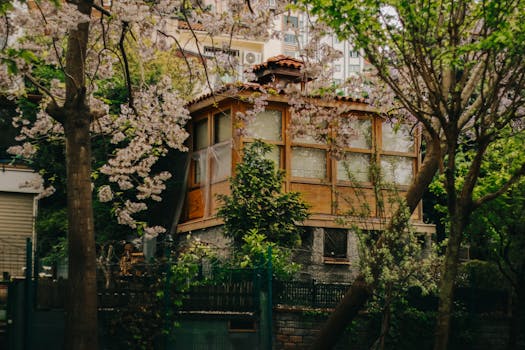
Urban Green Spaces: The Future of Outdoor Living in European Cities by 2025
Urban Green Spaces are becoming increasingly important in European cities, and by 2025, they will play a crucial role in shaping the future of outdoor living. With the growing awareness of the need for sustainability and green infrastructure, urban green spaces are being designed and developed to provide a range of benefits for both people and the environment.
Introduction to Urban Green Spaces
Urban green spaces refer to areas of green infrastructure in urban environments, such as parks, gardens, and green roofs. These spaces are designed to provide a range of ecosystem services, including air and water filtration, climate regulation, and habitat creation. They also offer numerous benefits for human health and wellbeing, including reduced stress, improved mental health, and increased opportunities for physical activity.
The Benefits of Urban Green Spaces
The benefits of urban green spaces are numerous and well-documented. Some of the key advantages of these spaces include:
- Improved air quality: Urban green spaces can help to remove pollutants from the air, improving air quality and reducing the risk of respiratory problems.
- Reduced urban heat island effect: Green spaces can help to mitigate the urban heat island effect, which can reduce the temperature in urban areas and improve comfort levels.
- Increased biodiversity: Urban green spaces can provide habitat for a range of plant and animal species, helping to increase biodiversity in urban areas.
- Improved mental health: Spending time in urban green spaces has been shown to reduce stress, improve mood, and reduce symptoms of anxiety and depression.
- Increased opportunities for physical activity: Urban green spaces can provide opportunities for physical activity, such as walking, cycling, and sports, which can help to improve physical health and wellbeing.
Case Studies of Urban Green Spaces in European Cities
There are many examples of successful urban green spaces in European cities. Some case studies include:
- The High Line in London: An elevated park built on an old rail line, which provides a green oasis in the heart of the city.
- The Park de la Ciutadella in Barcelona: A large urban park that provides a range of ecosystem services and offers opportunities for physical activity and social interaction.
- The Prater in Vienna: A large public park that provides a range of recreational activities, including cycling, boating, and sports.
The Future of Urban Green Spaces in European Cities
By 2025, urban green spaces will play an increasingly important role in shaping the future of outdoor living in European cities. With the growing awareness of the need for sustainability and green infrastructure, urban green spaces will be designed and developed to provide a range of benefits for both people and the environment.
Some of the key trends that will shape the future of urban green spaces in European cities include:
- Increased use of green roofs and walls: Green roofs and walls will become increasingly popular as a way to provide additional green space in urban areas.
- More emphasis on biodiversity: Urban green spaces will be designed to provide habitat for a range of plant and animal species, helping to increase biodiversity in urban areas.
- Greater focus on community engagement: Urban green spaces will be designed to engage with local communities, providing opportunities for social interaction and community activities.






